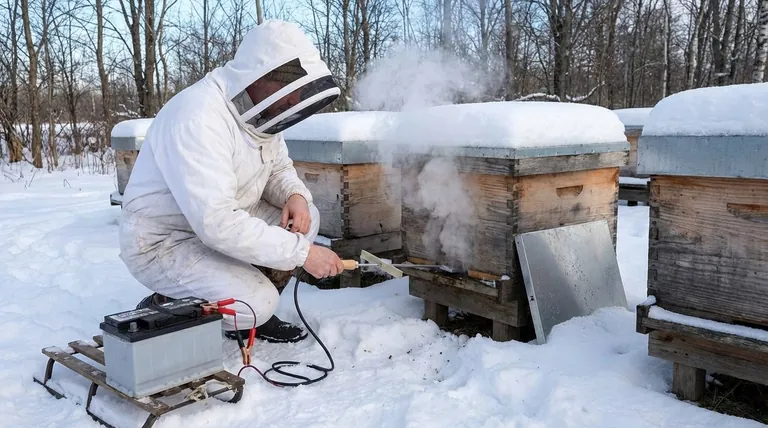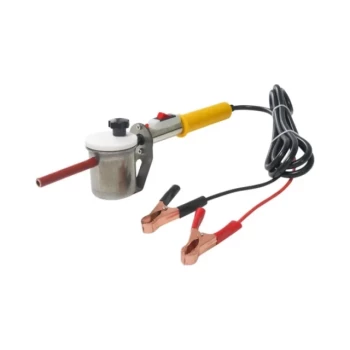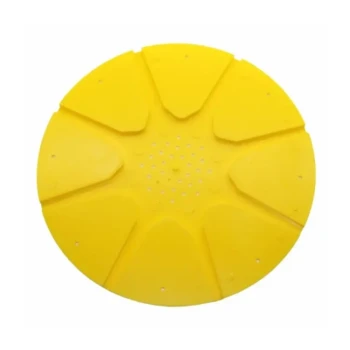In beekeeping, timing is the single most critical factor for effective Varroa mite control with oxalic acid. This treatment is applied in late fall or early winter because this is when the honeybee colony has little to no sealed brood, exposing the maximum number of mites to the treatment and achieving an efficacy rate of 90% or higher.
Oxalic acid only kills Varroa mites that are on the bodies of adult bees; it cannot penetrate the capped brood cells where mites reproduce. Applying it during the natural broodless period of late fall ensures nearly the entire mite population is vulnerable, resulting in a highly effective "knockdown" treatment.

The Varroa Mite's Hidden Advantage
To understand the timing, you must first understand the enemy. The Varroa destructor mite's life cycle is intrinsically linked to that of the honeybee, giving it a key weakness we can exploit.
The Mite's Reproductive Haven: Capped Brood
The most significant phase of the Varroa mite's life is its reproductive phase, which occurs exclusively inside a sealed honeybee brood cell.
A female mite enters a cell just before it is capped. Safely sealed under the wax, she lays eggs that hatch and mate, multiplying their numbers while feeding on the developing bee pupa.
This means that during the spring and summer, when the queen is laying thousands of eggs a day, a large portion of the hive's mite population is protected within these brood cells.
The Vulnerable Stage: Phoretic Mites
Mites that are not inside a brood cell are in their phoretic stage. They are physically attached to the bodies of adult bees, feeding on their fat body tissue.
It is only during this phoretic stage that mites are exposed and vulnerable to contact miticides like oxalic acid.
How Oxalic Acid Works
Oxalic acid is not a complex, long-lasting medication. Its effectiveness is based on a simple, direct principle.
A Contact-Only Miticide
Oxalic acid is a contact miticide. It must physically touch the mite to be effective. It has no systemic effect on the bee and, crucially, cannot penetrate the wax cappings of brood cells.
This is the central reason why treatment timing is not just a recommendation, but an absolute requirement for success.
The "Knockdown" Effect
Because it works on contact and has very little residual effect, an oxalic acid treatment is considered a "knockdown" event. It provides a rapid, one-time reduction of the exposed mite population.
If a significant number of mites are hidden in brood cells during the treatment, they will simply emerge later with the new bees, and the mite infestation will rebound quickly.
The Strategic Advantage of a Broodless Period
The bee colony's natural annual cycle provides the perfect window of opportunity to strike the Varroa population.
The Queen's Natural Winter Break
As temperatures drop in late fall and forage becomes scarce, a healthy queen will naturally slow down and eventually stop laying eggs.
This creates a "brood break"—a period of several weeks where there is no sealed brood in the colony.
Forcing Maximum Mite Exposure
With no brood cells available for reproduction, the entire Varroa mite population is forced into the phoretic stage. Every mite in the hive is riding on an adult bee.
Applying oxalic acid during this specific window ensures the treatment can contact and kill the highest possible percentage of mites in the colony. This is what allows for efficacy rates that exceed 90%.
Understanding the Trade-offs
While highly effective, this method is not a silver bullet and requires careful consideration.
The Critical Timing Window
The success of the treatment is entirely dependent on the broodless state of the colony.
Applying too early, when significant brood is still present, will dramatically reduce effectiveness as mites remain protected. Applying too late in deep winter can add stress to a colony that is in a tight, temperature-regulating cluster.
Not a Standalone Solution
Late-season oxalic acid treatment is a vital component of an Integrated Pest Management (IPM) plan, but it is not the entire plan.
It should be viewed as a final "clean-up" before winter. Beekeepers must still monitor mite levels throughout the year and potentially use other treatment methods during the summer when brood is present.
Making the Right Choice for Your Apiary
Use this understanding to inform your hive management decisions and ensure your bees are healthy and prepared for winter.
- If your primary focus is winter preparation: Monitor your hives for the natural end of the brood cycle to identify the optimal, broodless window for treatment.
- If your primary focus is assessing treatment efficacy: Only expect a high mite kill rate (over 90%) when you have confirmed the colony was truly broodless at the time of application.
Properly timing your oxalic acid application is one of the most powerful actions you can take to ensure your colony's survival through winter.
Summary Table:
| Key Factor | Why It Matters for Oxalic Acid Treatment |
|---|---|
| Broodless Period | No sealed brood means mites can't hide; all are exposed on adult bees. |
| Contact Miticide | Oxalic acid only kills mites it touches; it cannot penetrate brood cells. |
| Phoretic Mites | Mites on adult bees are vulnerable; mites in brood cells are protected. |
| Timing Window | Application must align with the natural brood break for maximum efficacy (90%+). |
Ensure your apiary's health with professional-grade mite control.
HONESTBEE supplies commercial apiaries and beekeeping equipment distributors with the wholesale supplies needed for effective, timely treatments. Our products support your Integrated Pest Management (IPM) plan, helping you achieve the high mite knockdown rates essential for winter survival.
Contact our expert team today to discuss your seasonal mite control strategy and wholesale needs.
Visual Guide

Related Products
- Durable 12V Oxalic Acid Vaporizer for Varroa Mite Treatment Beehive Beekeeping Tool
- Oxalic Acid Vaporizer 12V for Bee Varroa Mite Treatment
- Heavy Duty 12V Oxalic Acid Evaporator Vaporizer for Bee Varroa Mite Treatment Beekeeping Fumigator Atomizer
- 12V Bee Mite Removal Evaporator Oxalic Acid Vaporizer for Bee Fumigation Treatment 180W Atomization
- Adjustable Formic and Acetic Acid Dispenser for Bee Mite Treatment
People Also Ask
- What is the most common method of applying oxalic acid for mite control? Dribble vs. Vaporization for Varroa
- What is the role of oxalic acid in plants? A Key to Plant Defense and Internal Regulation
- What are the methods for applying oxalic acid in beekeeping? Control Varroa Mites Effectively
- What is the overall goal of using oxalic acid in late fall for beekeepers? Maximize Winter Survival with a Broodless Treatment
- Why is oxalic acid not used in summer? Timing is critical for effective Varroa mite control.

















